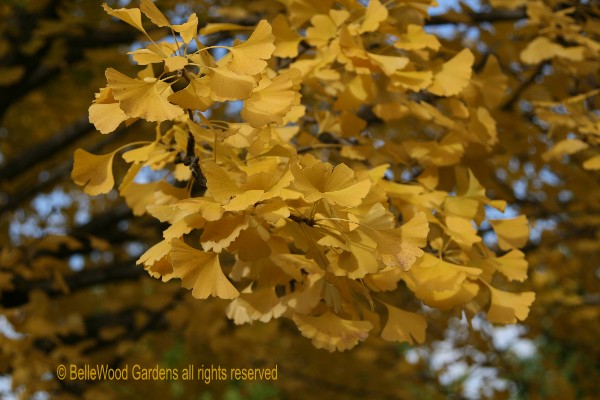
.
If you have any comments, observations, or questions about what you read here, remember you can always Contact Me
All content included on this site such as text, graphics and images is protected by U.S and international copyright law.
The compilation of all content on this site is the exclusive property of the site copyright holder.
Tuesday, 3 November 2009
Ginkgo at the New York Botanical Garden

Ginkgo or Maidenhair trees were around when dinosaurs roamed the earth. They're wonderfully resistant to pests, diseases, pollution. Beautiful fan-like leaves in autumn turn all at once to gold, then drop, all at once. The only species, Ginkgo biloba, is dioecious, with each tree separately sexed, male or female.

Most people try an obtain known male trees. It is not that the fruit is ugly. Far from it. The reason?
Stink, stank, stunk. Intact, it's fine. Damaged or crushed, the fruit smells putrid, like vomit.
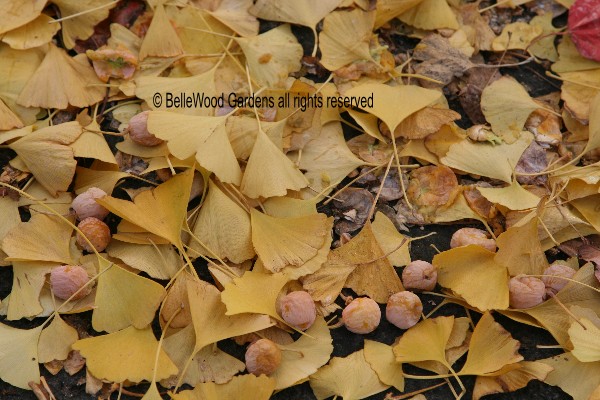
For whatever reason, the trees in the Watson Building parking lot
at The New York Botanical Garden are female.
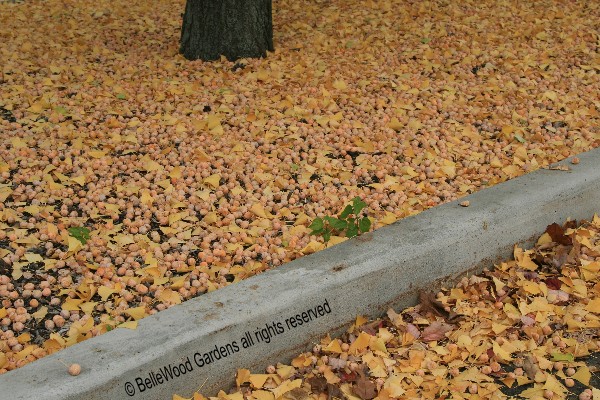
And this year they are fruiting prolifically. Ginkgo fruits are edible. My friend Nihei san, told me that his wife would gather them and wearing plastic gloves, wash away the pulp in a bucket of water. Then microwave 8 or so nuts at a time, for Nihei san to eat as a snack while watching television. I was ill prepared. If I had had a ziplock plastic bag I would have gathered some to try. But I did not want to drive home with a smelly mass of ginkgo fruits permeating the car with their ill odor.
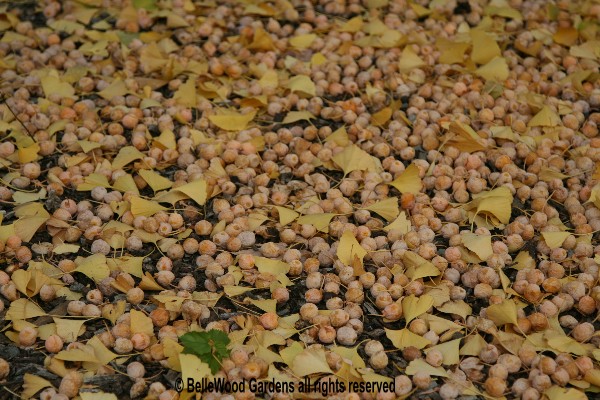
.
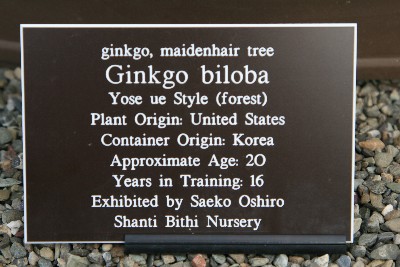
These parking lot trees were not the only ginkgo to be seen.
The Kiku exhibition includes bonsai forest-style planting of ginkgo.
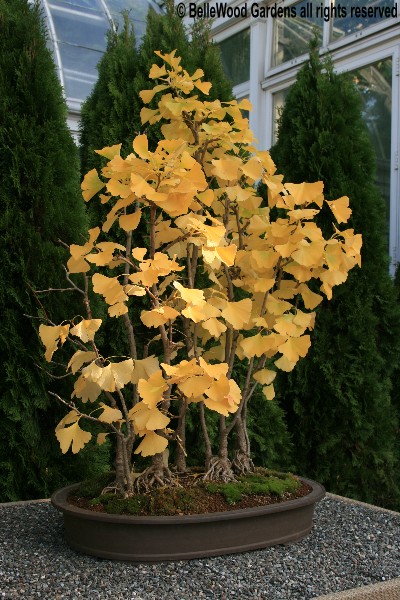
.
UPDATE: Wednesday, 11 November 2009
.
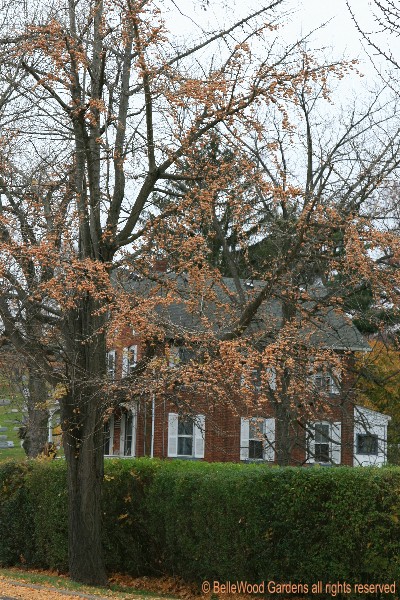
.
The ginkgo trees on Capner Street in Flemington, New Jersey are heavily in fruit.
.
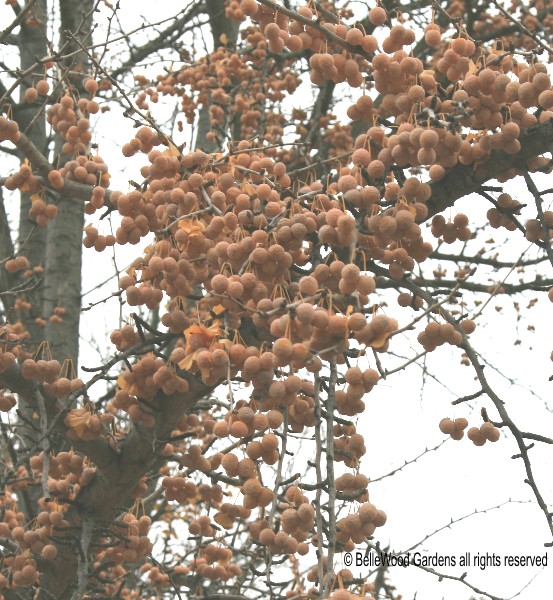
.
It is especially noticeable as the trees have played the "all fall down" card
wherein one autumn day ginkgos suddenly drop all their leaves, all at once.
I went there to collect some ginnan, ginkgo nuts, to use in a couple of Japanese recipes. Stinky business. I had a plastic kitchen glove on my right hand and squeezed each nut mostly free of pulp into a ziplock plastic bag. It didn't take very long to process 60 fruits. Zipped closed, my car didn't even stink too much. When I got home I repeatedly rinsed the nuts to free them from any shreds of pulp. Outdoors, up in the woods, so rinse water would be out of sight (out of nose?) when I finished.
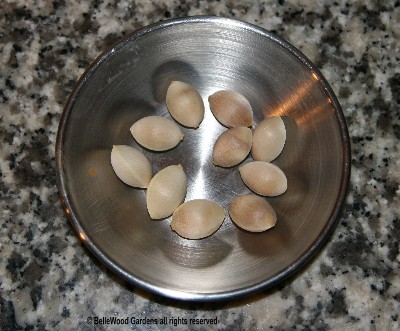
The little nuts look somewhat like pistachio nuts, with
a thin beige hull that needs to be removed before cooking.
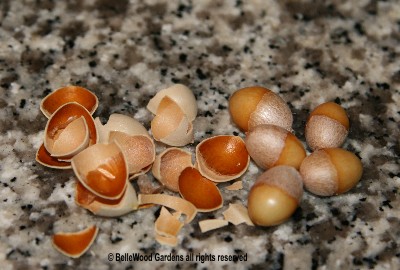
This was quite easy to do: just gently press on the edge of the nut
as it sits on the countertop, then use a fingernail to split the shell apart.
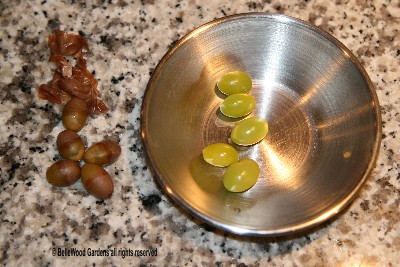
Next, put the shelled nuts in a saucepan with a little salted water and heat, shaking the pan all the while. When the nuts began to show a glimmer of color I took them off heat and out of the pan, then gently peeled away the skin. What a beautiful, lambent, jade-green color they now reveal!
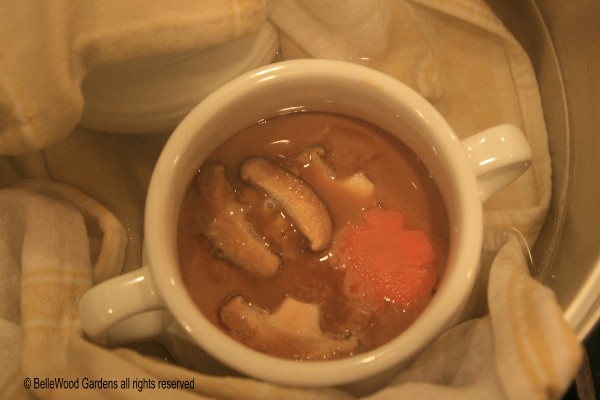
I decided to make chawan mushi, a savory egg custard with little treasures hidden within.
Here's the recipe I used.
I used these lidded china pots as I don't have chawan pots. Set them on a dish towel in a large saucepan.
Ingredients:
Gently beat 2 eggs with a chopstick. Add 2 cups dashi no moto stock and 1 Tablespoon of soy sauce.
Boil water in a teakettle. While water heats, carefully ladle custard base into little pots, filling 3/5 full.
Put their lids on and bring dish towel over the top of the little pots. Add now-boiling water to cooking pot and cover it. Heat on high for one minute, then simmer for 6 to 7 minutes. Uncover cooking pot, unfold towel and remove the lids on china pots.
Now add the hidden treasures. I used thinly sliced shitake mushrooms, one semi-cooked carrot slice, a raw shrimp cut into several pieces, and 3 ginnan, ginko nuts, to each cup.
Finally I ladled in the rest of the custard base, evenly divided, which filled cups about 7/8 full.
Return lids to pots, cover with dish towel, cover cooking pot and turn heat to high. Cook 1 minute, then turn heat down and again simmer for 6 to 7 minutes. Uncover the cups and gently jiggle them. They should be soft set, not firm. Take them out of the water, let sit for 5 minutes, and then serve.
Paul did not care for the flavor - he's not used to dashi no moto. Next time I'll use homemade shrimp or fish stock. The custard is very delicate, silky and soft. I only used a few ginkgo nuts because we've not eaten them before and it is best to go lightly on new foods. I think they add texture more that a flavor, and lend the embellishment of their beautiful color. Certainly ginnan are a special food of the autumn season. I'll make this again, with some minor adjustments, little tweaks for Western tastes. Chicken maybe, edible chrysanthemum leaf, snow pea pod. And look for other recipes that use ginnan. My foraging for ginkgo nuts are the focus, the pivot.